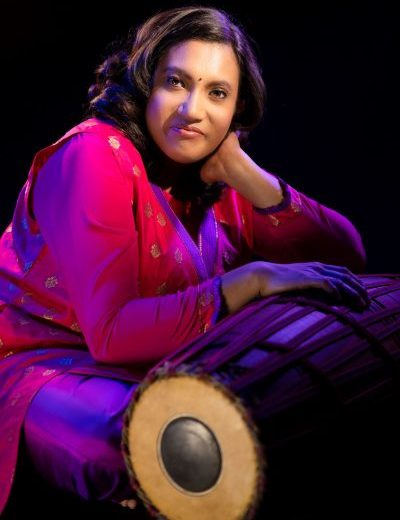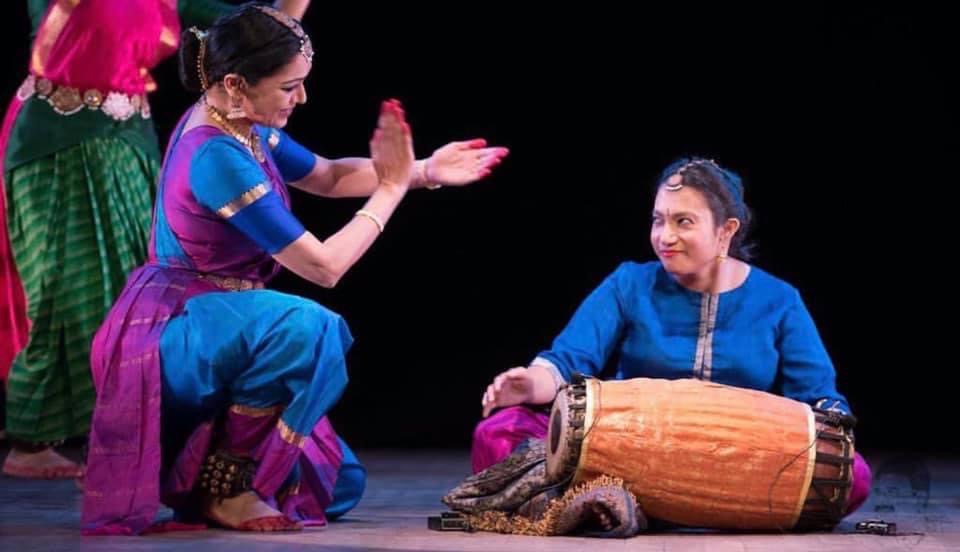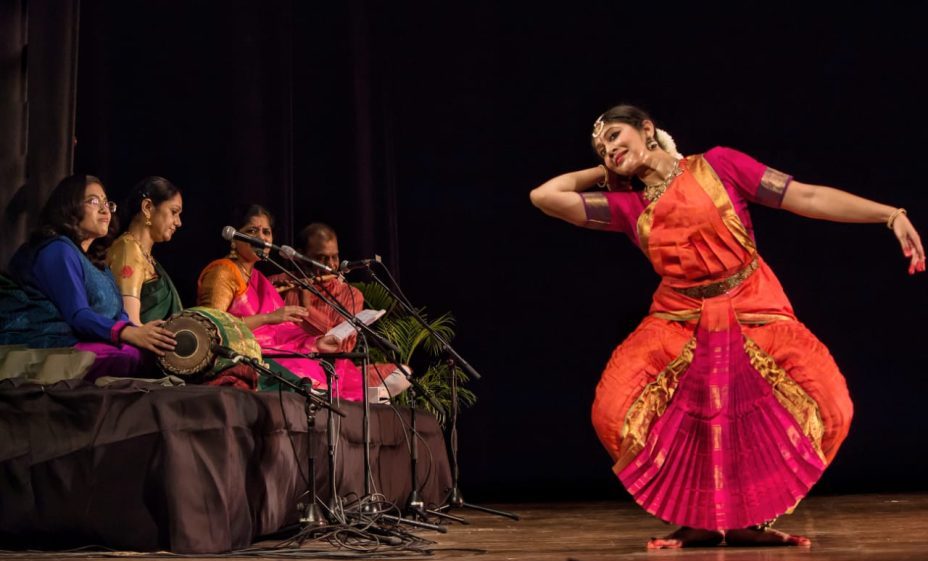
My rhythms with percussion: How I stepped into a man’s world to be a mridangist

My love affair with the mridangam began when I was ten years old. Born into a family of classical dancers, I beat my feet to rhythm — quite literally — from babyhood itself. Since I was born in a family of dancers, my first introduction to the performing arts was to the classical styles of Bharatanatyam and Kathak. So, initially I was dancing to a rhythm, not creating my own rhythms. Soon, my parents discovered that I would beat time on any flat surface. In the beginning, I started learning mridangam as a hobby to get a holistic understanding of nritta. But soon the desire to commit myself totally to this amazing percussion instrument overtook me completely. My first guru was the incrediblytalented maestro, Late Guru Sivakumar. Now, I am being trained to be an accompanying mridangist by Sri Ramamoorthy Sri Ganesh.
The mridangam, an ancient Indian instrument, is likely to be thousands of years old—since India has one of the oldest and most sophisticated traditions of rhythm. The exact origin is unknown, but the instrument exists in paintings and sculptures from as early as 200 BCE. The mridangam is often depicted as the instrument favoured by Ganesha, the elephant-headed God. That is an interesting piece of trivia since I was born at ‘Ganesha Natyalaya,’ founded by my dancer grandmother Padma Bhushan awardee Guru Saroja Vaidyanathan. So, the encouragement I got from my family, especially my mother, the acclaimed Bhartanatyam danseuse and Sangeet Natak Academy awardee Rama Vaidyanathan, was immensely motivating. Unlike many other women mridangists, I had to fight no battles to win the approval for mridangam training.

My struggles were of a different level. In a family of acclaimed dancers —my elder sister, Dakshina Vaidyanathan Baghel, is a Bhartanatyam danseuse — I had to work extremely hard to carve my own niche, to earn my own recognition and not be caught in the shadows of reflected glory. That can be tough. As I have been trained to accompany Bhartanatyam dancers, sometimes it is an uphill task when the tala, the rhythm and the nritta, the foot work is not synchronised. That jars on my sense of sound aesthetics, which is even tougher.
I am often asked if my lineage has been my passport to a career as a mridangist. I feel if you belong to a musical family, you are exposed to different kinds of music and instruments. You may get the training and then the initial platforms. But after that you can grow only on the strength of your talent and perseverance. No dancer is likely to invite me to accompany him or her, including my mother and sister, if I am not up to the mark and up to speed.
Also read: Bombay is the cultural and psychic cradle of my characters: Rahman Abbas
In the world of Indian classical music, percussion is considered a virile art associated with masculinity. The fact that the mridangam is associated with Ganesha and Nandi underscores the gender stereotyping of musical instruments. Traditionally, men have played the mridangam. But things are changing now and there are extremely well-known women mridangist players, like Dandamudi Sumati Ramamohan Rao. But despite all this, the acceptance of women mridangists leaves much to be desired. In the art world in India, male artistes dominate the scene and women percussionists struggle to earn the spotlight even if they are immensely talented. There is a perception that women who play the mridangam cannot keep up the energy or intensity that is required for a two- to-three-hour-long programme. That is utterly incorrect. If women can go to outer space, guard our borders, fly fighter planes, playing the mridangam is quite simple. Though things are changing for the better, the mindset is still the same. In many parts of India, male artistes do not like to share the stage with a female accompanying artiste. We find girls playing melody instruments like the flute or violin, but in the rhythm section, women playing the mridangam or tabla are still a rarity. Such stereotypes have passed on from generation to generation, making the breaking of the barrier so much tougher.

The fact that I did not have to fight for my space on the stage by virtue of the strength and clout of my family committed to the classical performing arts has been a huge advantage. But it will prove to be a negative, too, as I want to be known for my artistic capability and not my artistic family. Secondly, I want to make it big not as a woman mridangist, but as a mridangist. My gender should not be the reason for my success.
On September 2, I made my public debut at the Kamani auditorium in Delhi. To a packed audience of more than 600 people, I was showcasing for the first time the fruits of years of learning, hours of practice and a lot of blisters on the hands. Funnily enough, I was not nervous because as my guru always told me ‘if we respect the art then art respects you’. The mridangam is a very loyal instrument. If we treat it with reverence, perseverance and concentration it deserves, it never lets you down. That is exactly what happened. It was a magical experience as the rhythm just flowed from my hands onto the mridangam, keeping the audience spellbound. In the first half hour I performed solo, I exposed my audience to all the permutation and combination of beats. Later, I accompanied the students of Ganesh Natyalaya in their myriad performances, showcasing my capacity to be an accompanying artist.
I have made my debut. Years of dedication and perseverance have yielded results. In the years to come, I will have to prove my mettle as a mridangist so much so that every performance will be memorable for my command over the complicated rhythms and beats of the classical dance form. But, as they say, excellence is a moving target. I am looking forward to the time when I am able to better my own standards.


